Have you ever wondered why Google Ads and GA4 often report different data? These data discrepancies can be frustrating, but they are quite common due to several factors.
In this article, we'll describe eight key reasons behind these data discrepancies. Understanding these reasons is crucial for accurate data interpretation and effective marketing strategy. Let's explore the possible causes of these discrepancies.
1. Conversion Count Settings
Google Ads offers a setting that allows you to choose between counting every conversion that occurs after an interaction or only counting one conversion per interaction. This can significantly impact the number of conversions reported in Google Ads compared to GA4, leading to data discrepancies. For instance, if you select the option to count every conversion, each subsequent conversion from the same user will be recorded, leading to a higher conversion count.
On the other hand, if you opt to count only one conversion per interaction, you may see fewer conversions reported. These differences in settings can result in discrepancies between the data in Google Ads and GA4. It’s important to carefully consider which setting best suits your tracking objectives and ensure that both platforms are configured consistently to avoid data discrepancies.

2. Conversion Modeling Differences
Conversion modeling in GA4 and Google Ads is handled differently. GA4 only exports observed conversions to Google Ads, where additional conversion modeling is applied. This can lead to an increase in reported conversions in Google Ads compared to GA4. The separate handling and modeling processes in each platform contribute significantly to the data discrepancies.
3. Conversion Delays
The timing of conversion reporting differs between Google Ads and GA4. Google Ads attributes conversions to the date of the click or impression, while GA4 reports them on the actual day the conversion occurs. This delay can cause apparent mismatches in the reported data between the two platforms.
4. Lookback Windows in Google Ads
The conversion lookback window setting in Google Ads can affect data tracking. A shorter lookback window may result in fewer tracked conversions, causing differences when compared to GA4. It's important to align these settings to minimize discrepancies.
5. (Engaged) View-Through Conversions
By default, Google Ads tracks (engaged) view-through conversions, while GA4 requires additional configuration to enable this tracking. This can lead to discrepancies as Google Ads might report more conversions from this source than GA4.

6. Google Ads Tag Setup
The setup of your Google Ads tags plays a critical role in tracking conversions accurately. Incorrect or incomplete tag setups can result in untracked conversions, leading to discrepancies. Enabling Enhanced Conversions and Consent Mode in Google Ads can also capture more conversions than GA4, where these features might not be activated.
7. Attribution Settings
Attribution models are a major cause of data discrepancies. GA4 typically uses a cross-channel last-click model by default, while Google Ads often employs a data-driven attribution model. Each platform’s attribution model can distribute credit for conversions differently, resulting in varied data.
8. Invalid Traffic Filtering
Google Ads and GA4 filter out invalid traffic differently. Conversions from sources like bots or click farms might be removed in varying degrees across the platforms. This filtering can significantly impact the reported data, especially in accounts with high levels of invalid traffic.
Conclusion
For accurate analysis and reporting, it’s important to understand why Google Ads and GA4 show different data. By considering these eight factors—conversion modeling, conversion delays, tag setup, lookback windows, conversion count settings, view-through conversions, invalid traffic filtering, and attribution settings—you can better interpret the data discrepancies.
In order to pull the data from various marketing sources into your reports we recommend using automation tools like Dataslayer to save time and avoid errors. You can start your free 15-days trial here.
This will empower you to make more informed decisions and optimize your marketing strategies effectively.







